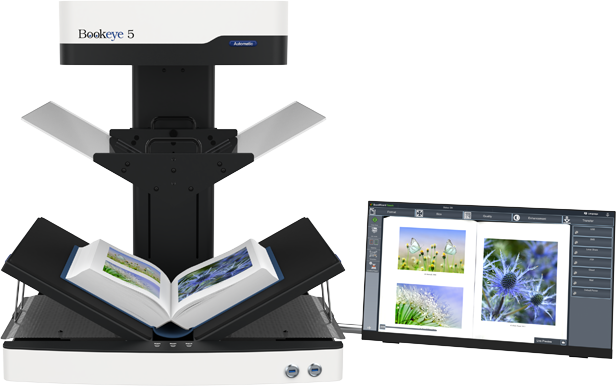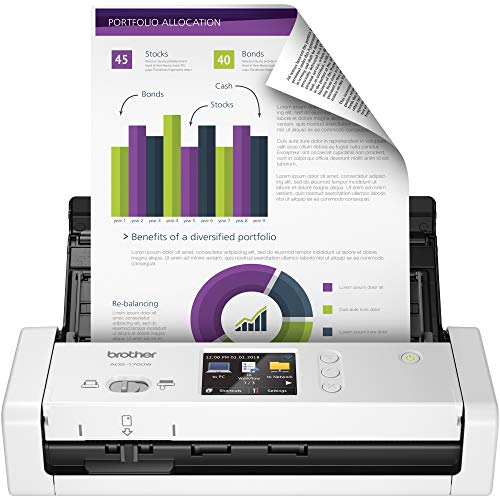Best Scanners For Digitization Projects For 2024
Brandon Forder Apr 18, 2024 11:50 AM
Do you want to know which scanners are the greatest right now? Here on this page, we've compiled a list of the top electronics for use in both the home and the business, so you don't have to worry.
Many consumers still benefit from investing in the best available standalone scanner. While some high-quality all-in-one printers may be put to use as scanners, nothing beats dedicated scanners for digitizing paper documents, photographs, and more.
One of the scanners we've recommended below is ideal if you operate in a busy office that requires frequent, high-quality scanning.
If you're looking for a reliable and high-performing scanner, your search can end here. We've compiled a list of the best scanners for digitizing tasks.
If you're in the market for a new scanner, be sure to take advantage of our handy price comparison tool, which is conveniently located right here and will instantly search through many online stores to get you the cheapest possible price.
From scanning speed and resolution to build quality and design, we've compared all the bases when looking at these scanners. In addition, we compared the scanners' general performance, price, and ease of use.

Compare Products
- SCORE8.8
- BrandEpson
- Prime
Last update on 2024-04-18 / Affiliate links / Images, Product Titles, and Product Highlights from Amazon Product Advertising API
Tone Reproduction
Multiple factors within the scanner contribute to the accurate capture of tone in a digital image of a photograph. The capabilities of a scanning system can be determined by reviewing and, if at all possible, testing all of these components.
Bit-Depth Capture and Output
Make that the scanner's bit rate is greater than the digital image's required bit rate. With this feature, you can rest assured that all of the pertinent data will be recorded, regardless of whether or not your scanner supports saving files at a greater bit depth. Scanners typically process images at a bit depth that is higher than what is optimal because of embedded image processing features inside the software. The image's tonal values are best captured when scanned at a greater bit depth and then scaled down, either internally or externally, to the appropriate bit-depth.
Dynamic Range / Flare
The dynamic range of a scanner determines how faithfully it can reproduce the whole range of tonalities in a wide variety of photos, especially in the dark areas. The scanner's dynamic range should be as large as, or larger than, the original photographs. The dynamic range of the scanner can also be diminished by too much flare. Clipping (loss of tonal values) in the highlights or shadows may be the result of a disparity between the dynamic range of the scanner and that of the source photograph, as revealed by assessment tests. In that case, the bit depth of a scanner won't be able to recreate the full range of tones present in the original. Scanner dynamic range and flare can be evaluated using targets. The dynamic range of images is discussed in greater detail in "Introduction to Basic Measures of a Digital Image for Pictorial Collections," published by the Library of Congress's Prints and Photographs Division.
Scanning speed
We always get asked, "What is the speed of your scanner?" when we pitch a solution to a client. The general public tends to believe that the faster the scanner, the better the results. Okay, but in my experience, that's not always the case. Scanning speeds above a certain threshold are unsustainable because of the difficulty in continuously feeding papers into the scanner, especially while scanning a variety of document types. Scan speeds are reduced when papers of varying sizes are fed into it.
When referring to simplex scanners, the speed is expressed in pages per minute (ppm), while duplex scanners use images per minute (ipm). We now have scanners with speeds from 20 ppm all the way up to 200 ppm. Unless it's for a service bureau or another activity that requires rapid throughput of large numbers of identical documents, I recommend a scanner with a page-per-minute (ppm) rate of 40 or less.
Resolutions (optical & output)
The resolution of the scanner is a crucial feature to look for when making a purchase. There are two potential conclusions.
1. Optical resolution
The scanner's real scanning resolution is displayed here. Accordingly, this is the crucial metric.
2. Output resolution
This is the greatest resolution that can be generated by the scanner utilizing interpolation techniques. Regardless of input resolution, the output resolution is always finer. It doesn't improve resolution, but rather artificially enlarges the image size. Thus, this is a less crucial metric than optical resolution.
Feeder : Flat bed / ADF
The Auto feeder is an optional extra for flatbed production scanners. Depending on your workspace, the removable flatbed of some modern scanner devices (like the Kodak 1400 series) might be very convenient.
In order to scan bound documents, books, fragile or highly sensitive documents, and files without splitting papers, etc., a flatbed scanner is required. Documents of legal significance, such as contracts and deeds, are double legal size and cannot be separated, making a flatbed scanner a must for scanning them.
Budget
Research the various scanning systems available at your budget level. In order to gain insight into the pros and downsides of specific hardware and software, it is often beneficial to seek advice from other institutions. Consider the savings that can be made by using imaging providers or collaborative projects to handle your digitizing tasks. Whether you're doing the scanning in-house or contracting it out, it's important to compare systems to make sure you're getting the most out of your initial investment.
How to choose the best scanner for you?
Consider if you'd be satisfied with just a photo scanner or a multi-function device that also prints and copies before settling on the best scanner for you.
One factor to think about is the size of the documents you intend to scan. A compact scanner will do the trick if the photos are on the little side. Contrarily, a large scanner is appropriate if you regularly scan A4- and larger-sized images and documents.
After that, you need to examine the scanner's resolution. The resolution determines how well a document looks after being scanned. If you intend to enlarge the scans and use them as wall art, a resolution of 1200 to 3200 dpi is appropriate; otherwise, 300 dpi should suffice.
You should also consider the machine's pricing, scanning speed, scanning upgrades, and network connectivity features.
Why Does an Artist Need a Scanner?
Images used in your artwork should be of the greatest quality possible so that your finished product looks its best. Scanning your artwork is a great first step toward building a digital portfolio, making prints, and selling your work online. Visual examples of your work are required for any creative position.
An electronic camera can be a viable alternative for documenting your work, but doing so presents its own challenges. Lacking a professional-grade camera gear, it might be challenging to manage glare and illumination. The problem of angle distortion may also take some time to fix.
The top art scanners make it easy to capture stunning images of your flat artwork. They work well for printing photos, paintings, and other artworks with a high quality finish. Digital photographs of your artwork are essential if you hope to make a living from your creative endeavors. Use Instagram to gain exposure for your artists' website or to sell high-quality fine art prints.
The research behind the best scanners for digitization projects has surely led to their remarkable qualities. Certain aspects of these items are exclusive to them, such as the trademarked curve flatten technology. They have high-resolution cameras that provide scans that surpass all expectations.



























